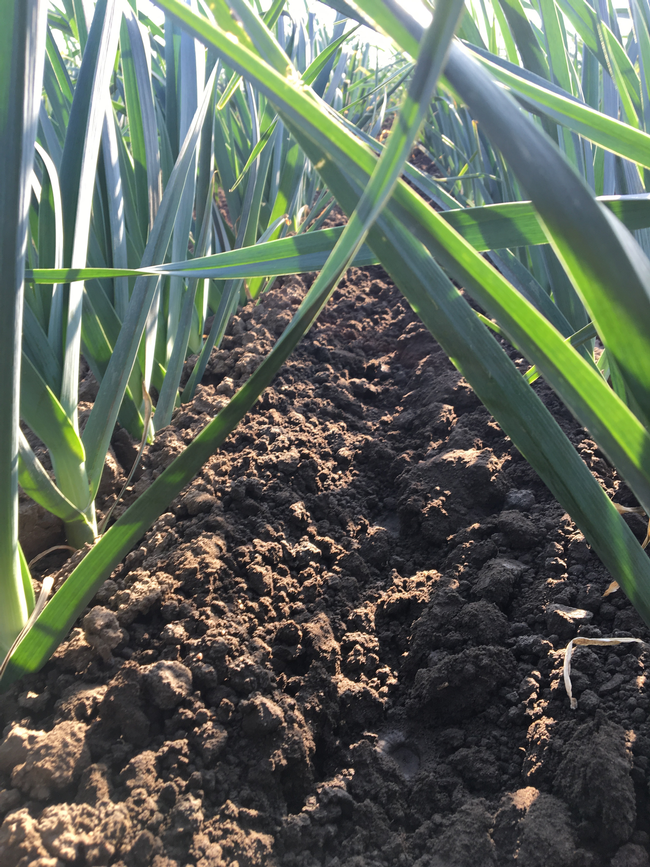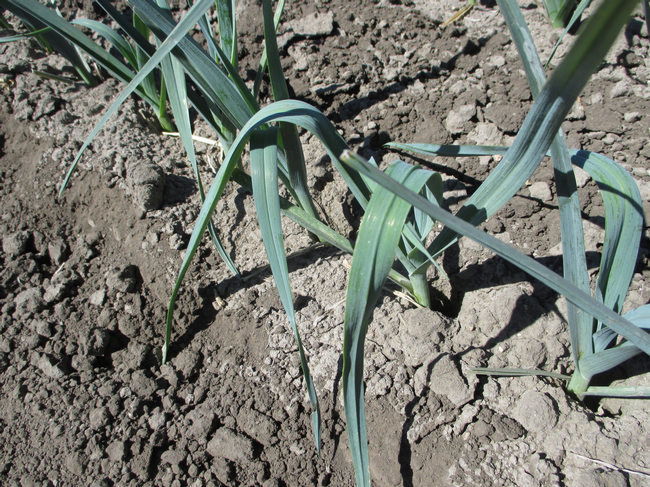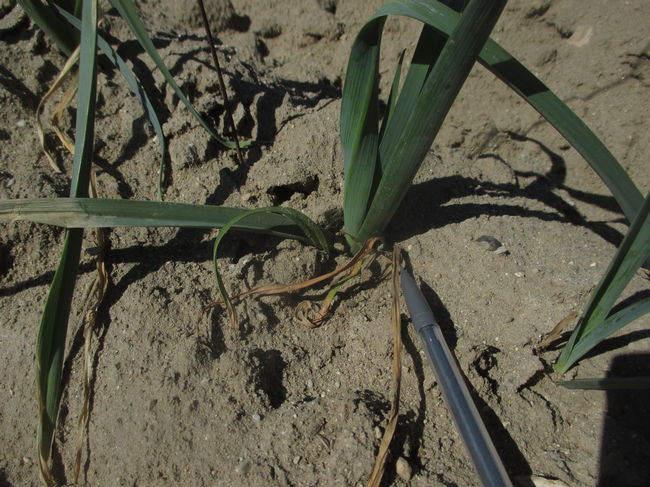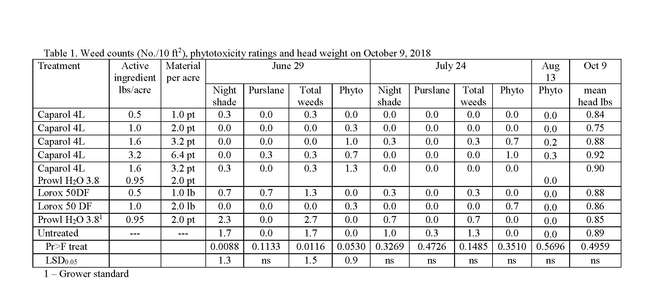Leeks were grown on 589 acres in Monterey County in 2018 and were worth $10.8 million. Depending on the planting date, they can be in the field for 120 or more days, particularly if they are over wintered. They can be grown from seed, but are commonly transplanted to overcome slow initial plant growth. Weed control in leeks is quite challenging because, like onions, they never form a dense crop canopy that can effectively compete with weeds. In addition, given the long crop cycle, a leek planting may experience flushes of both cool and warm season weeds.
Weed control options in organic leeks consist of 1) locating leek planting on blocks with low weed pressure (e.g. blocks with careful weed control in prior crop rotations), 2) utilizing transplants (to get a head start on weeds), 3) use of preirrigation to germinate a flush of weeds followed by shallow cultivation or flaming to kill them, 4) close cultivation of weeds during the production cycle and 5) hand removal of weeds that escape these aforementioned control methods. Weed control in organic leeks can be effective, but in general, weeding costs can be quite high given the long crop cycle and the need for multiple hand weedings.
In conventional leek production, all the practices just mentioned for use in organic production are also used. In addition, preemergent and post emergent herbicides are available that provide further weed control:
| Preplant burn down | Preemergent | Post emergent |
| Axxe | Dacthal | Fusilade |
| glyphosate | Outlook | Poast |
| Scythe | Satellite | Select Max |
| Shark | ||
| Suppress |
This array of materials provides tools to burn off a flush of weeds prior to planting or transplanting, preemergent control of weeds and post emergent control of grass weeds. What is missing is a post emergent herbicide that controls broadleaf weeds.
Over the past three years we have evaluated Caparol and Lorox as potential post emergent treatments for leeks. Caparol is registered for use on leeks in Canada and the IR4 Program is developing a tolerance for this material in the US. We are working with the IR4 program to conduct crop safety evaluations to provide data to support its eventual registration.
In a 2018 trial Caparol and Lorox at all rates provided excellent weed control on both evaluation dates (Table 1, and Photo 1.). Caparol and Lorox were both safe on leeks but caused a curious bending of older leaves early in the production cycle (Photo 2); the plants eventually grew out of this symptom and it did not appear to affect the yield. The bent leaves are trimmed off and it does not appear to be a quality issue for the marketability of mature leeks. In the 2019 trial rates above 0.5 lb a.i./A of Lorox reduced leek yield (data not shown). Lorox has the advantage of controlling yellow nutsedge. We observed that Lorox at 1.0 lb a.i./A provided selective control of yellow nutsedge (Photo 3).
In 2019 we tested the use of Caparol and a liquid formulation of linuron, Linex 4L, for safety and efficacy on onions. We applied these materials at the 2nd, 3rd and 4th true leaf stage. Both materials were safe on onions, but there was greater safety when applied at the later growth stages. For more information on these trials go to: http://cemonterey.ucanr.edu/Vegetable_Crops/Weed_Reports/.



